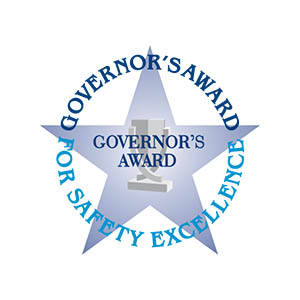By Shaun Davidson, Health, Safety & Environment Team Lead
As we enter the summer season, it’s crucial to recognize that the sun is shining longer, and warm winds are blowing. Whether you’re outdoors for work or leisure, it’s essential to be aware of a significant threat—heat stress.
Heat stress is a hazard that can occur at any time or anywhere, but it is strongly associated with any activity likely to raise an individual’s core temperature. Environments where heat stress can occur include, but are not limited to, those with high or humid air temperatures, direct sunlight, radiant heat sources, hot objects, or strenuous physical activity.
Types of Heat Stress
Heat stress can take many forms, including heat cramps, heat fatigue, heat exhaustion, and, most seriously, heat stroke.
Cramps
Cramps are usually caused by performing hard physical labor in a hot environment. They often result from an electrolyte imbalance caused by excessive sweating and slow to no water replenishment.

Fatigue
Traditionally, fatigue occurs when you do not acclimatize to the environment correctly. However, you can counteract the fatigue by taking frequent breaks.
Heat Exhaustion
Heat exhaustion is a more severe condition and requires immediate attention. Exhaustion symptoms include headache, nausea, vertigo, weakness, thirst, and fainting.
Heat Stroke
Heat exhaustion can lead to heat stroke, which is a medical emergency. Heat stroke is when the body cannot cool itself anymore, and the body temperature rises to a critical level, which may lead to unconsciousness. Symptoms of heat stroke are confusion, irrational behavior, a lack of sweating, hot/dry skin, loss of consciousness, and convulsions.
How to Treat Heat Stroke
If you suspect that someone is experiencing heat stroke, it’s a medical emergency that requires immediate first aid and professional medical attention. First, call 911. Next, move the person to a cool and shaded area. Remove any extra clothing to ensure maximum skin exposure to the air. If possible, wet their skin with cool compresses or water and have them drink cool water slowly and consistently until help arrives. Remember, never leave someone alone or unsupervised if you suspect they are having a heat stroke.
Prepare and Prevent Heat Stress

Now that we know the signs and symptoms of heat-related issues, what can we do to prepare and prevent them?
Schedule tasks during the cooler hours of the day. Avoid the higher-temperature parts, usually 12-5 PM.
Monitor hydration. Hydrating is one of the most important yet commonly overlooked prevention tools for heat stress. Consuming fluids with low to no sugar or caffeine is essential. These include water, flavored water, low-calorie electrolyte solutions, low-calorie sports drinks, etc. They do not include coffee, tea, soda, iced tea, or other similar beverages. Aim to consume an additional 24-36 ounces of fluids for every hour of exposure.
Acclimate to the conditions. New workers who have never been exposed to warmer temperatures should acclimate at 20% exposure time on day one, with a 20% increase in exposure each additional day. Experienced workers should start at 50% exposure time on day one, increasing at a daily rate of 10% each day.
Take frequent breaks away from heat sources. If you’re outside, seek shade. When possible, seek air conditioning, cooler temperatures, or areas with increased airflow.
Be aware. Tell someone if you do not feel well. Look out for those working around you.
Remember, safety is a collective responsibility, and by working together, we can mitigate the risks associated with heat stress and ensure a productive and enjoyable summer season for all.
Additional Offerings
RETTEW offers a variety of courses and services, like our Summer Safety Spotlight: On the Road Safety, to ensure you and your staff are prepared. Contact us to learn more about RETTEW’s comprehensive and compliant safety training programs and how classes can be customized to your facility and response plan.
Safety training and consulting are only some of RETTEW’s 600-plus services. Our safety team works hand in hand with engineers, scientists, project managers, and other technical experts at places such as manufacturing facilities, drill pads, and commercial construction sites. We are well respected for our work in a diverse number of industries and are known for ensuring workers and equipment remain safe, which keeps your projects on track and your bottom line growing.

